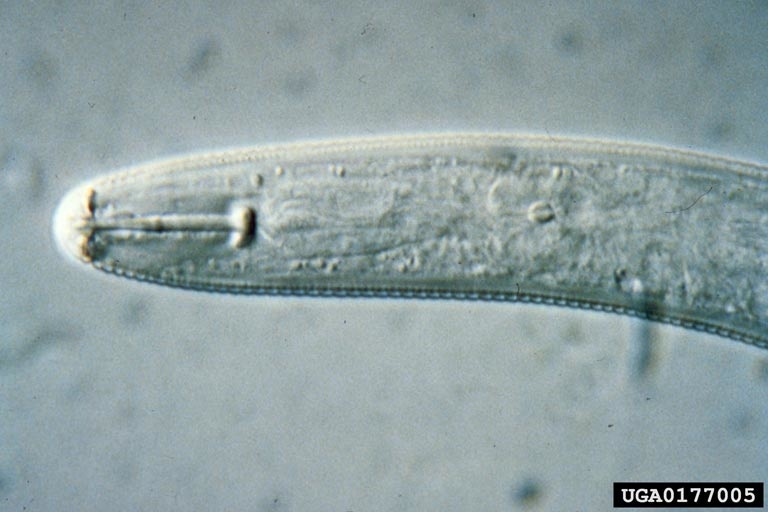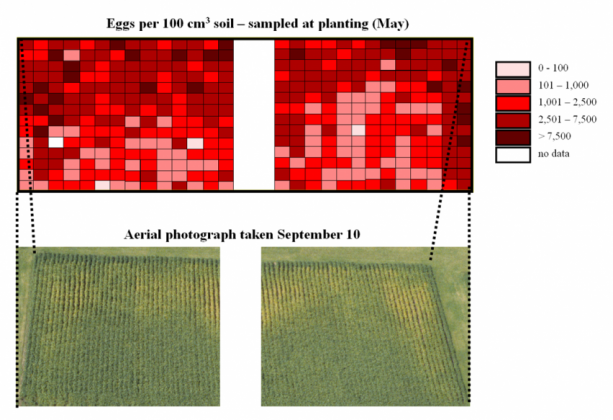August 9, 2018

The soybean cyst nematode (SCN) reproduction can be affected greatly by soil conditions. SCN numbers are positively correlated with soil temperature and negatively correlated with soil moisture. In short - greatest SCN reproduction occurs in hot, dry growing seasons.
Temperatures in Iowa were unusually warm in May 2018. In one field in central Iowa, adult SCN females were seen on roots on June 5, just 26 days after planting (read more here). Typically, SCN females do not appear on roots in the spring until 35 or more days after planting.
June and July have continued to be warm and parts of the state remain dry. The USDA National Agricultural Statistics Service reported at the end of July that corn and soybean crop development in Iowa was 7 to 14 days ahead of schedule. It is likely that SCN development has been accelerated this season, too. And hastened SCN development could result in greater-than-normal increases in egg numbers.
Patches of soybeans maturing early? A tell-tale symptom of SCN
Soon, patches of early-maturing plants will be appearing in Iowa soybean fields. There can be many different reasons for early senescence of soybeans. A common cause of early-maturing soybeans that is not often discussed is SCN feeding. The results of a study conducted at Iowa State University’s Northern Research and Demonstration Farm south of Kanawha, Iowa, illustrate this phenomenon visually.
A sampling grid pattern was established in the study area shown in the figure below, and three soil cores were collected from each intersection of the gridlines in the spring. The three cores were combined and mixed into one composite soil sample, and the SCN egg population density present in each soil sample was determined. In mid-September, aerial images of the study area were collected.
A distinct pattern of early-maturing soybean plants is seen near the top edge of the field in the aerial image. And grid cells with high SCN egg population densities are in a similarly-shaped pattern in the map of SCN numbers. The soybean plants matured early where SCN population densities were the greatest.

Map of initial soybean cyst nematode (SCN) egg population densities (top) and an aerial image (bottom) taken in September of the sampled area in an SCN-infested field at the Iowa State University Northern Research and Demonstration Farm near Kanawha, Iowa.
Actively manage SCN for the future
It is not possible to eliminate SCN from a field once the field has been infested. Instead, an active, integrated management approach is needed to keep SCN population densities in check to preserve the productivity of infested fields for growing soybeans in the future.
Integrated management of SCN includes growing nonhost crops such as corn in rotation with SCN-resistant soybean varieties. Also, farmers should seek out soybean varieties with different sources of resistance to grow in different years. And nematode-protectant seed treatments now are available to bolster the performance of SCN-resistant soybean varieties. Fields should be sampled in the fall prior to every second or third soybean crop to monitor SCN population densities.
For more information about the biology and management of SCN, refer to www.TheSCNCoalition.com, www.soybeancyst.info, and www.soybeanresearchinfo.com/diseases/scn.html.
You May Also Like




